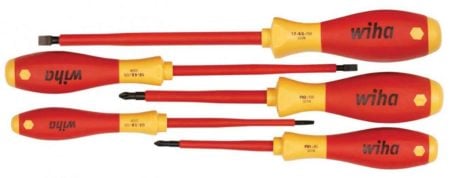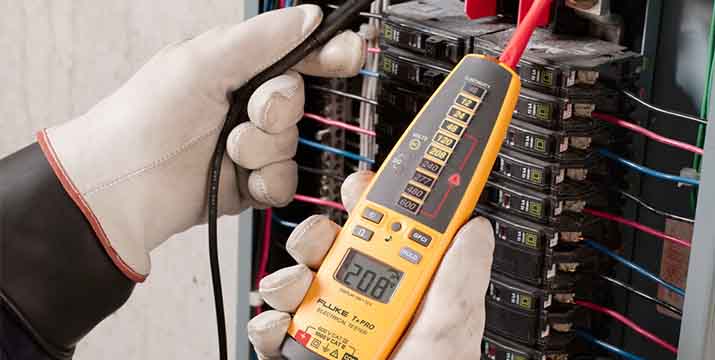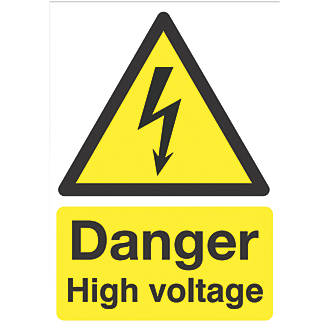One amazing thing that the internet has given us is certainly the independence. Gone are the days that you have to call up a professional for every small project you need to complete.
Replacing a circuit breaker is definitely one of the trickier DIY tasks, but it’s still possible to do if you’re even the tiniest bit handy!
You’re going to need some patience, a bit of electrical knowledge (or the willingness to learn), and a few tools as well.
Note: when dealing with electricity, you really do need to be cautious.
Make sure you do everything safely and correctly before just jumping right in and trying to rip off your circuit breaker.
It won’t do you any good saving money replacing it yourself if you don’t live to reap the benefits.
Before we get started on exactly how to replace a circuit breaker, let’s talk about what a circuit breaker is and exactly what it does.
So…..
What is a Circuit Breaker? What Exactly Does it Do?
Both very good questions!
A lot of people know that when the power goes out, occasionally they have to go flip a couple of switches until it all comes back on.
But what exactly are you doing when you’re flipping these random switches?
Well, a circuit breaker is actually a very valuable piece to your home.
It’s an absolutely essential device in the modern world of electricity that we live in. Not only is it vital, but it’s one of the most important safety mechanisms in your home.
So what do they do?
Circuit breakers are constantly monitoring the flow of electricity throughout a building. If they detect that there’s too much current flowing through any part of the building, they will automatically shut the power off in that specific section of the building.
That’s why if you plug in too many things in your house, you’ll hear a snap and you’ll lose power! It’s because your circuit breaker detected too much current.
Annoying when it happens, but it’s actually protecting you.
Without them, we really wouldn’t be able to live safely with the amount of electricity that we consume.
With all this being said, you need to replace your circuit breaker if there’s something wrong! It’s kind of like when your fire alarm runs out of batteries, you just gotta replace them.
One Final Note
We already mentioned this earlier but felt it was important to mention it one more time.
If you don’t feel knowledgeable or confident enough to do this yourself, then call a professional! This is meant to simply be a guide if you have enough knowledge but just need a little bit of guidance.
Okay, now with that disclaimer out of the way, let’s get started on how to replace a circuit breaker!
What You’re Going to Need
You will need a few supplies to get you started. Nothing crazy, make sure you have:
- A new circuit breaker. This may seem stupid but we have to say it. Also, make sure that it is the exact same brand, make, model, and size as the one you’re removing. Otherwise, you’re going to run into trouble.
- Rubber mat or a piece of plywood to stand on. This may sound silly but it has a very specific purpose. This is going to insulate you against electric shock, should anything go wrong! If you’re standing on the ground of your house, you have the potential to light yourself up like a Christmas tree! This is precisely what we’re trying to avoid.
- An insulated flashlight or some sort of other bright, independent light source. You’re messing around with the electricity so of course, your lights won’t be working. Get something bright.
- An insulated screwdriver. Notice for all these tools, we’re using the adjective insulated. This is 100% necessary when completing any electric project.
- An insulated pair of wire strippers.
- Cable connectors so you’re able to connect the circuit breaker to the main panel.
- Voltage tester.
Perfect! Now that you’ve got everything you need, let’s replace that circuit breaker!
Replacing the Circuit Breaker
Let’s go step by step.
- First, locate your main circuit breaker box. We saw locate the main box because some houses may have the main one, and then several smaller ones.
Be 100% sure that you’re replacing the primary circuit breaker.
- Use a voltage tester to see if power is going out through the wire attached to the breaker.
- Now, go ahead and turn off the branch breaker boxes, followed by the main power. Obviously you don’t want to even think about attempting to replace the circuit breaker without cutting all power. The main power switch should be the largest switch that’s located either above or below all of the other smaller switches. It also typically has the largest amperage rating out of all the other breakers on the panel and is generally labeled ‘main’, or something similar.
- Now turn off all the individual breakers.
- Before you continue, inspect the exterior of the breaker.
If you detect any rust, charring, moisture, or discoloration then this is not a good sign. The conditions are too dangerous for you to proceed and you should call an electrician to do this for you. Again, electricity is serious and if things get too complicated, don’t be afraid to call in a professional. - Before proceeding, make sure you have all your safety gear on. You should be wearing rubber gloves, wearing rubber boots, standing on a rubber mat, and using the insulated tools that we mentioned above.
- Using a Phillips screwdriver, remove the screws holding the faceplate on.
- Now read the label on the main power switch the determine what kind of circuit box you own.
- Now that it’s open, you can inspect the interior of the panel. Make sure you do this without touching anything! Just like when inspecting the exterior, you’re looking for any signs of charring, rust, discoloration, moisture, etc.
If you see anything, call an electrician. You really only want to be replacing this yourself if everything looks normal and looks safe. - Loosen the screws that hold the wire found on the defective breaker.
- Once they’re loose, go ahead and actually remove the breaker from the panel.
- Safely discard of the old circuit breaker.
- Now you simply just need to replace the old circuit breaker with the new one! This is where it’s important that you have the same exact brand, make, model, etc. You also need to make sure that the amperage matches the old one. This should pretty simply just snap back into place.
- Place the wires in the new circuit breaker exactly as they were in the old one.
If it helps, take a photo of exactly how they were before taking out the old circuit breaker. This will serve as a handy reference when you’re trying to re-attach everything. - Tighten the screws. Make sure they’re pretty tight but also be careful not to overtighten them either.
- Now you can replace the panel’s faceplate.
- Once the faceplate is 100% secured, you can turn the main power switch back on. Once that one is on, go ahead and flip all of the individual switches back on, as well.
Testing the Voltage
In order to test and make sure that you did everything correctly, you can use the voltage tester! By using this, you can guarantee that you have power running through the circuit again and that you did everything correctly.
In addition to testing after to make sure you did everything correctly, you’ll want to test before trying to replace them.
After you turn the switches off, use the voltage tester to make sure that they’re actually dead.
Most likely they will be, but when dealing with electricity, it’s always better to be thorough than to just assume.
Additional Tips and Warnings
If you do decide that you want to go ahead and attempt to replace your circuit breaker by yourself, then please do so with caution!
Here are a couple of extra tips to help keep you safe
- Always stand to the side of the circuit breaker when you’re turning it on and off. Also, turn your eyes away.
Although the chance is fairly small, there is still a tiny chance that the circuit breaker could explode. All electricians take this safety measure to minimize any damage to the eyes if it does happen. - Wear safety goggles and other safety gear at all times! It’s rare that something will happen but these will really help to minimize any injury that you may get.
- Do your research. Read a little bit about electricity, how circuit breakers work, and get some working knowledge, if you don’t have some already.
- At the end of the day, if you don’t feel confident, just call an electrician. Hurting yourself isn’t worth it.
Conclusion
Replacing a circuit breaker is not necessarily a difficult task, but it can be a dangerous one. The chances of anything happening are relatively low, but if something does happen, it can potentially be deadly.
If you have some experience in doing this type of thing or know a lot about electricity, we say go for it.
If you take all the safety precautions, you will be fine.
If you don’t know a Phillips from a flathead, go ahead and google your nearest electrician.
Whatever you decide to do, stay safe, and good luck!
Now that you’ve read our guide, take time to read on how does GFCI outlet work. You might consider to buy GFCI outlet after you read our informative guide. Read it here!















